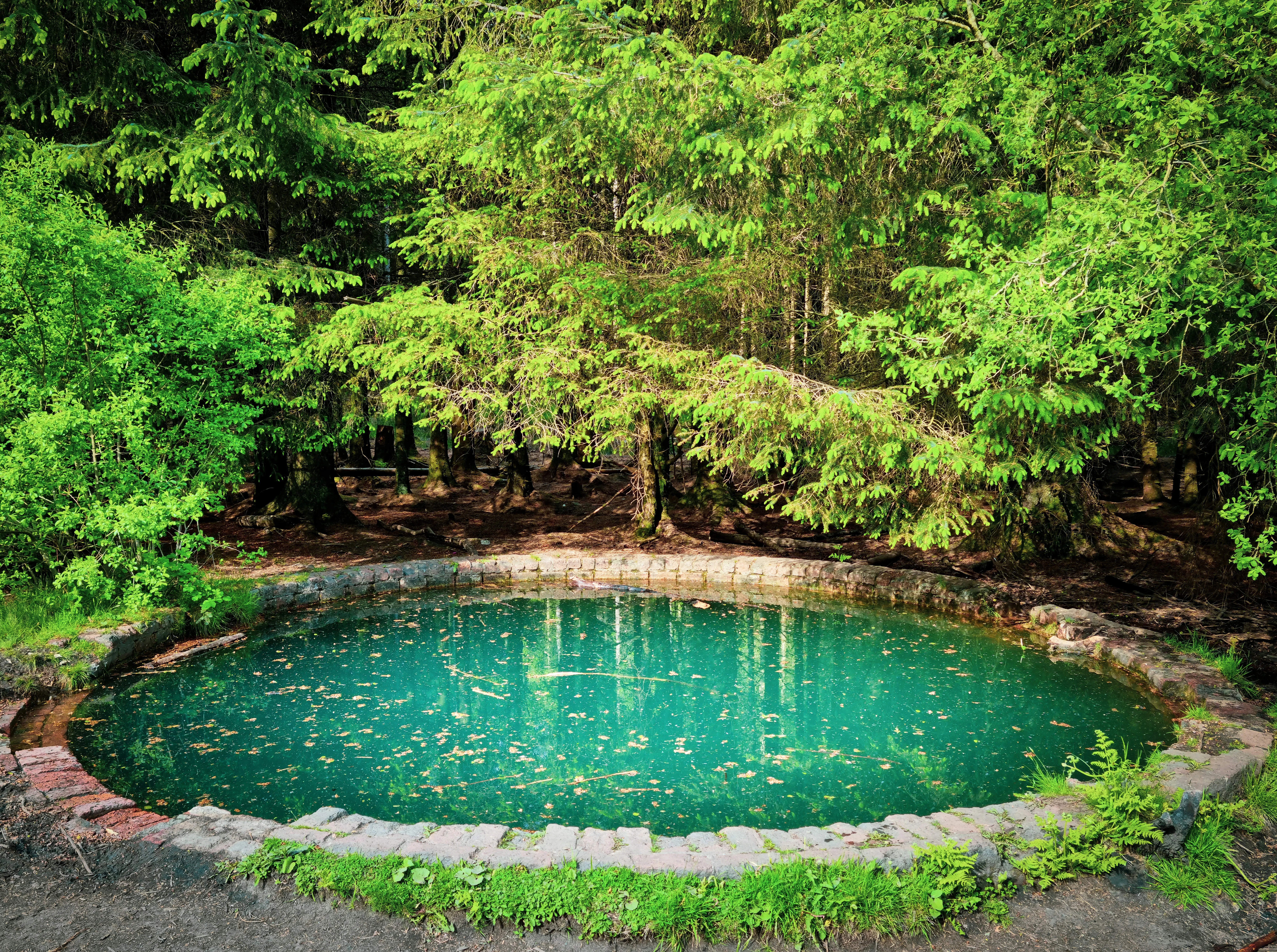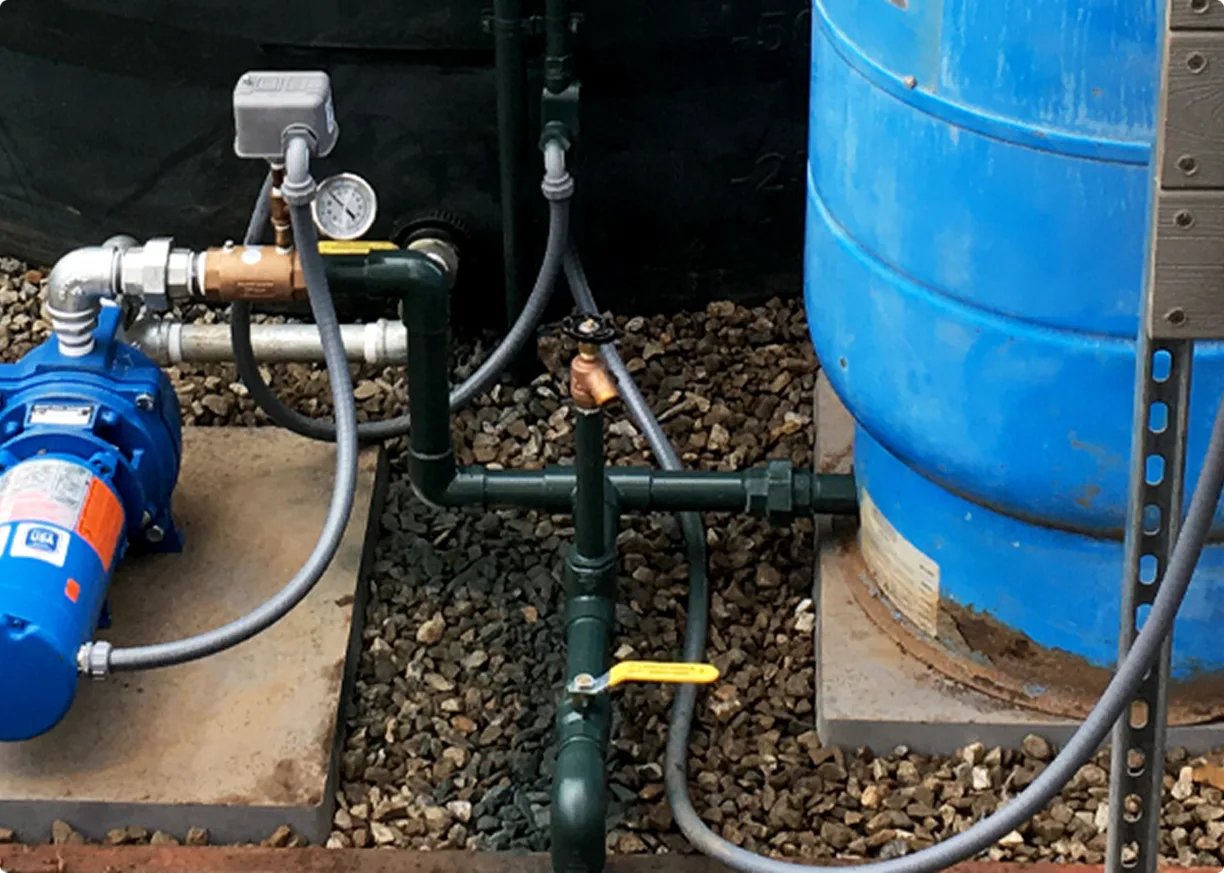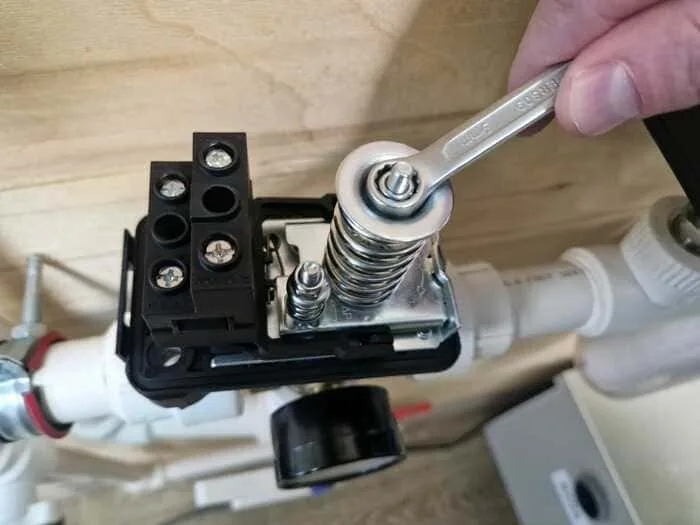Shallow vs. Deep Well Jet Pumps: Finding the Best Fit for Your Water System

More and more homeowners and small property owners are turning to jet pumps for their watering needs. The main reasons? Simplicity, convenience, and efficiency. These pumps come in two main types: shallow well and deep well jet pumps. In this article, we will take a closer look at the main advantages of each type of jet pump, compare their benefits and features, and guide you in choosing the right water-pumping equipment for your needs.
What Is a Jet Pump?
A jet pump is a straightforward system that works based on the force of flowing water. Its simple design means no moving parts that wear down from friction, making it durable and easy to maintain: water flows through a narrow passage (the Venturi nozzle), which increases its speed and creates a low-pressure area (vacuum).
Main components of a jet pump:
Pump housing – protects the internal mechanisms.
Motor – generates the power needed for operation.
Ejector – a key component that increases pressure.
Venturi channel – a narrowing section of the pipe that increases water flow speed and creates a low-pressure zone.
Why Choose a Jet Pump Over a Submersible Pump?
Unlike submersible pumps, jet pumps stay on the surface to draw water from different depths. The design makes them easier to install, maintain, and access for servicing.
We recommend following the installation requirements, cost and return on investment, maintenance, and overall durability.
INSTALLATION
A jet pump is installed above ground, making it easier to access for maintenance. However, it is best suited for wells and boreholes up to 30 metres deep.
A submersible pump, on the other hand, is placed directly inside the well and needs to be fully submerged at a specific level. It performs well in deep wells (over 30 metres).
COST
Jet pumps are relatively affordable and offer a quick return on investment. Their simple design helps reduce installation and maintenance costs, as they require no expert servicing.
Submersible pumps are more expensive due to their design and operating conditions. They need proper sealing, regular maintenance, and professional installation, which adds to the overall cost.
MAINTENANCE AND DURABILITY
Jet pumps have a simple, open design with accessible parts, making them easier to repair.
Submersible pumps operate much quieter and generally have a longer lifespan. However, maintenance is more complex and costly because servicing requires removing the pump from the well, which can also compromise its sealed casing.
The decision between a jet pump and a submersible pump depends on the well depth, budget, and ease of maintenance. If you are looking for an easy-to-use, budget-friendly option, a jet piece is a great choice. Plus, you can select between a deep-well jet pump or a shallow-well jet pump.

What Is a Shallow Well Jet Pump?
A shallow well jet pump draws water from small depths and sits above ground. Its operation is limited by the deepness of around 8–9 metres as it relies on atmospheric pressure to create suction within the system. Item is easy to use as it allows instant system start-up: no priming the suction pipe with water before each operation and stable water flow, even when conditions change, like fluctuations in power supply.
The compressor provides smooth load adjustments on the motor, integrates easily into any water supply system, and is less sensitive to solid particles and contaminants. This type of equipment works when a high volume of water needs to be pumped consistently without the hassle of priming before each start-up ( irrigation, self-sufficient water supply systems, greenhouse and field watering, and farm water distribution).
Pros and Cons of Shallow Well Jet Pumps
Pros:
- Easy to install
- Low cost
- Ideal for shallow water sources
Cons:
- Limited suction depth
- Dependent on water level stability
- Noisier operation
Common Problems with Shallow Well Jet Pumps
Here are some common shallow-well jet pump problems and their possible causes and solutions:
Low pressure or reduced water flow
- Causes: clogged filters or pipelines; incorrect system setup or worn-out parts; a drop in the water level at the source.
- Solutions: clean the filters and inspect the pipelines for blockages; check the ejector and Venturi to ensure they are working properly; monitor the water level and consider deepening the well if needed.
Air leakage in the suction system
- Causes: loose or leaky pipe connections; damaged or worn-out hoses and seals; air entering the system due to a low water level.
- Solutions: inspect all connections for leaks and replace faulty gaskets; check the valves and fix any defects; add water to the system to remove air pockets.

What Is a Deep Well Jet Pump?
A jet pump for boreholes is a popular type of machine among homeowners and businesses due to its reliability and relatively low maintenance requirements compared to other submersible equipment. Choose it for full-pressure conditions and features high head performance, large flow capacity, and energy efficiency. Its operating range is at depths from 7.5 to 30 metres.
These devices use a two-pipe system, which allows for more powerful suction and ensures a stable water supply, even at significant depths. The mechanism includes an ejector unit placed directly in the borehole to ensure fast circulation and fluid delivery from great depths.
The deep well jet pump system is designed with two pipes to enhance efficiency:
- The pressure pipe directs the water flow under pressure back into the ejector.
- The second (suction) pipe pulls water back into the pump and sends it through the water supply system.
The operating principle of the mechanism is quite simple, but it allows the device to function at much greater depths.
Pros and Cons of Deep Well Jet Pumps
Pros:
- Works with deep boreholes
- High efficiency
- Better pressure and performance
Cons:
- Complex installation
- Higher upfront cost
Common Problems with Deep Well Jet Pumps
Here are some of the most common deep-well pump problems:
Ejector Blockage
- Causes: build-up of sand, silt, or other particles in the pipes and ejector; using water with impurities.
- Solutions: install a filter before the pump inlet; regularly flush the system; clean the ejector if performance is low.
Reduced Water Pressure
- Causes: air leaks in the pipeline, reducing pump efficiency; worn-out seals, valves, or bent pipe connections.
- Solutions: check for air leaks or loose connections in the system; replace worn parts, such as check valves and gaskets; monitor the water level to prevent the pump from running dry.

How to Choose the Right Jet Pump for Your Well
Deciding between a shallow well jet pump and a deep well jet pump comes down to a few key factors—how deep the borehole is, how much water you need, and how much you are willing to invest in installation and upkeep.
Key factors to consider:
1. Determine the Borehole Depth
- If the water table is 8–9 metres deep or less, a shallow well jet pump is a great option.
- When it is more than 9 metres, you need a deep well pump.
Note: A compressor’s performance also depends on seasonal water level changes.
2. Consider your water needs
- A shallow-well product is a good option for a small home or holiday house with minimal water outlets.
- A deep-well part is the best choice for a household with high water consumption, as it provides more consistent pressure.
Note: The water usage depends on the number of people in your household, daily activities, and any additional water demands like a garden, greenhouse, or farm buildings. On average, a family of three to four people uses 250–400 litres of water per day.
3. Consider your budget and maintenance costs
- Shallow well jet pumps are more budget-friendly and easy to install, making them a great option for boreholes with water levels up to 8–9 metres. Plus, since they sit above ground, maintenance and repairs are straightforward.
- Deep well jet pumps come with a higher price tag and require a more involved installation process, often needing professional help since the ejector sits deep in the borehole. However, they offer better performance for deeper water sources.
If your borehole is shallow and your water usage is low, a shallow well jet pump is a cost-effective and simple solution. But if you have a deep water source and high water demand, a deep well jet pump is the better choice, ensuring a stable and reliable water supply even in challenging conditions.
Final Thoughts
When it comes to modern water supply, try to find efficient and cost-effective solutions while meeting your needs and budget. A private water system that draws from a natural source is a smart and economical choice. When selecting the best pump for your well, make sure to consider all potential risks and the specific conditions of your water source.
Not sure whether a deep well pump or a shallow well jet pump is the best fit for your needs? Head over to Streamline Pump Solutions to explore the range and compare the technical capabilities of different models. Get expert advice and reach out to our specialists to learn about all available options and choose the right water supply system for your home or property.

Articles you may be interested in


